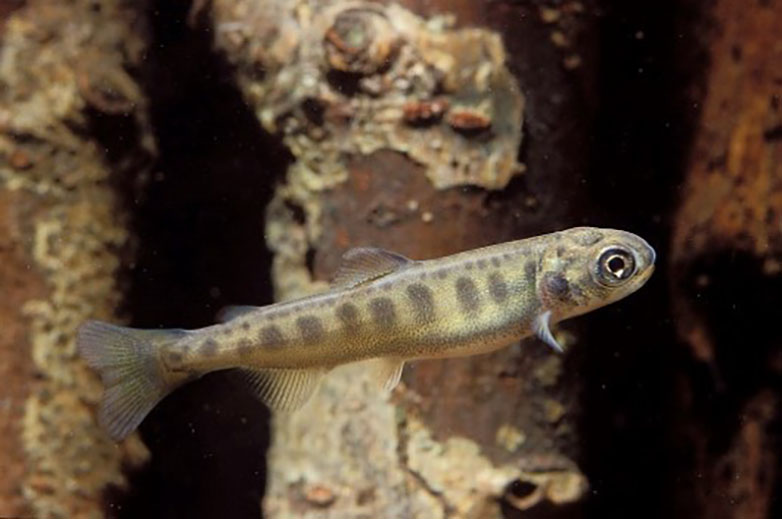Toxic chemicals in juvenile Chinook salmon
The Chinook-Orca connection
As a member of the Southern Resident Killer Whale Recovery Task Force, we are developing and implementing a range of recommendations for orca recovery. One recommendation includes the investigation of toxics in rivers that support juvenile Chinook salmon.
Protecting Orca: The orca-salmon connection
Inadequate food supply is an important cause of decline in the Southern Resident Orca population. Adult Chinook salmon are a key prey food for Orcas. Chinook salmon hatch in upland streams and migrate to the ocean as juveniles (fry and parr fish). If young Chinook salmon do not survive, Southern Resident Orcas have less food. Chinook salmon populations in the Puget Sound and Columbia River Basin are classified as threatened under the U.S. Endangered Species Act.
Discovering sources to help fish and orcas

Juvenile Chinook salmon photo by Richard Bell, UW Press
Juvenile Chinook salmon face a number of threats when they migrate from rivers to the ocean. Our partners at Washington Department of Fish and Wildlife (WDFW) identified toxic chemicals in the fish that may reduce the chances of juvenile Chinook survival as they migrate to marine waters. Using evidence provided by WDFW, our scientists are working to identify the sources of toxic chemicals in the salmon’s migratory rivers. We also study how the salmon incorporate toxics into their tissues.
Our scientists plan to study the distribution of toxic chemicals in several river systems. The Snohomish River will be first, where flame retardant chemicals affect juvenile Chinook. This multiple-year study is underway, and updates will be posted as they become available.
By identifying sources of toxic chemicals affecting juvenile Chinook, we have a chance to help two iconic Northwest species survive.

